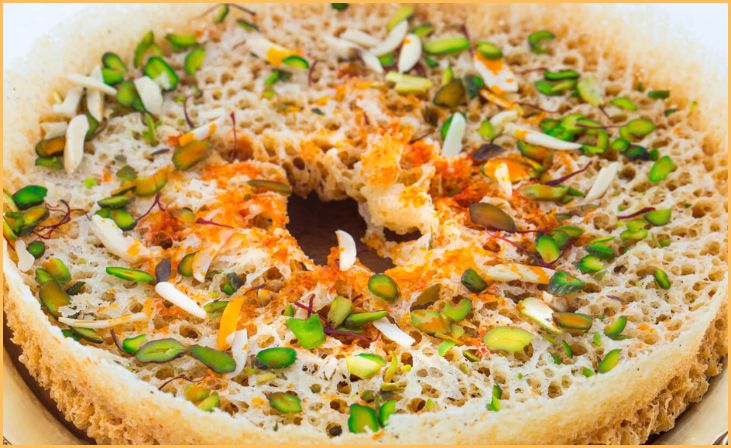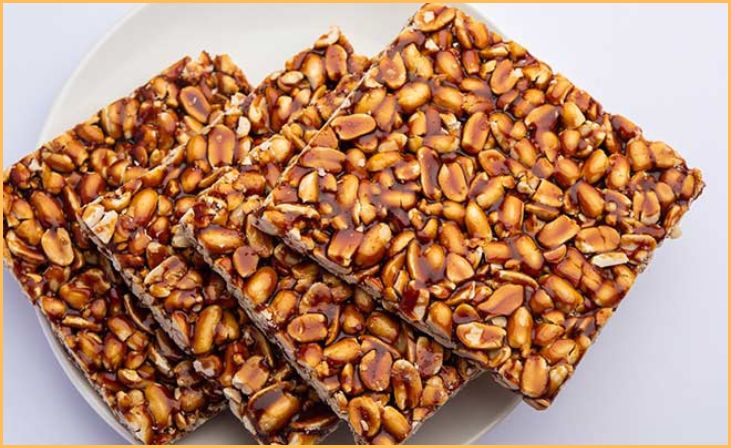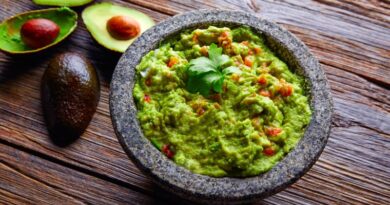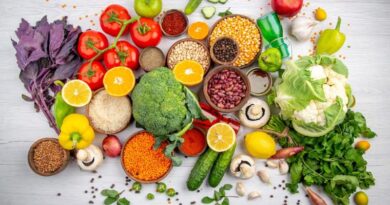Regional Foods To Try This Makar Sankranti – Makar Sankranti, a festival that joyously heralds the sun’s journey into the Capricorn zodiac, is observed with immense enthusiasm throughout India. This auspicious occasion, synonymous with the change of seasons, marks the transition from winter to spring, signifying longer days and the promise of warmer times ahead. As the sun ascends, bringing renewed vitality, communities unite to celebrate the vibrancy of life. At the heart of Makar Sankranti’s allure lies a captivating culinary tradition that adds a flavorful dimension to the festivities. The festival is synonymous not only with the vibrant kites that dot the skies but also with the rich tapestry of regional foods that grace tables across the country. These culinary delights, steeped in cultural significance, not only satiate the palate but also serve as a symbolic link to the harvest season.
8 Regional Foods To Try This Makar Sankranti
Til Ke Laddu (Sesame Seed Ladoo)

Roasting sesame seeds in order to bring out their nutty flavor is the method that is used to make the popular sweet known as Til Ke Laddu. After that, the jaggery or sugar is melted to produce a syrup, which is then combined with the ghee and the previously roasted sesame seeds. Through the process of shaping the mixture into round laddus, a delightful combination of crunchiness from the sesame seeds and richness from jaggery or sugar is achieved. The festival is associated with a sense of warmth and prosperity, which is represented by these laddus.
Also Read: The 7 Healthiest High Protein Vegetables
Pongal
The celebration of the harvest season is reflected in the South Indian dish known as Pongal. Rice and lentils, which are the primary components of the dish, are thoroughly cooked until they reach a creamy consistency. Spices such as black pepper, cumin, ginger, and ghee are used to season the dish, which results in an experience that is both flavorful and aromatic. Coincidentally, cashews and curry leaves are frequently used as garnishes for Pongal, which contribute a crunchier texture and enhance the overall flavor.
Undhiyu
During the colder months of the year, the Gujarati dish known as undhiyu is traditionally prepared. Using a combination of seasonal vegetables such as surti papdi, sweet potatoes, and purple yam, the recipe calls for the preparation of the vegetables with spices such as mustard and fenugreek. Because of the slow cooking process, the flavors are able to combine, which results in a curry that is both flavorful and fragrant. A festive touch is added to the Makar Sankranti feast by the addition of undhiyu, which is typically consumed with puris.
Ghevar

The Ghevar is a sweet dish that is visually stunning and originates from the state of Rajasthan. For the purpose of forming a porous disc, the batter, which is composed of flour and ghee, is poured into hot oil. After that, the disc is submerged in sugar syrup, which results in a dessert that is both sweet and syrupy. During Makar Sankranti celebrations, the Ghevar is a focal point because of its distinctive appearance, which is characterized by a delicate structure resembling a lattice. This allows it to showcase the culinary craftsmanship of Rajasthan.
Sarson da Saag with Makki di Roti
Sarson da Saag is a vibrant curry that is made from mustard greens, and it is considered to be a traditional Punjabi dish. Spices such as ginger, garlic, and green chilies are used to impart a robust and earthy flavor to the dish and give it its distinctive flavor. Typically, it is served with Makki di Roti, which is a type of flatbread that is made from maize flour. A celebration of the winter harvest with a meal that is both wholesome and flavorful constitutes the essence of rural Punjab, which is represented by this combination.
Patra
In Gujarati cuisine, patra is a popular snack that consists of colocasia leaves that have been smeared with a spiced gram flour paste. After being rolled, steamed, and sliced into rounds, the leaves are then prepared. The rolls that are produced are seasoned with curry leaves and mustard seeds, which results in a flavor that is quite distinctive. Patra is not only a delicious snack, but it is also a nutritious one. It combines the benefits of colocasia leaves and gram flour in a form that is visually appealing.
Puran Poli
In the state of Maharashtra, Puran Poli is a sweet flatbread that is traditionally prepared for festive occasions. Cooking chana dal with jaggery, cardamom, and nutmeg until it forms a thick and fragrant mixture is the method that is used to make the filling, which is referred to as puran. After that, the filling is encased in a wheat dough that is soft and thin, and it is cooked on a griddle when ghee is used. The end product is a delectable combination of sweet and savory flavors that encompasses the spirit of hospitality and culinary expertise that is characteristic of Maharashtra.
Also Read: 10 Best Foods for Hair Growth: Unlock the Secrets
Chikki

Chikki is a sweet that is made by combining jaggery or sugar with a variety of nuts such as peanuts or sesame seeds. Chikki is a crunchy sweet. After the mixture has cooled and gone through the process of solidification, it is then flattened and cut into bars or squares. A snack that is both quick and easy to prepare, chikki is frequently consumed during the Makar Sankranti celebrations. A treat that is harmonious and satisfying, ideal for sharing during the holiday season, is created by the combination of the sweet syrup, the crunchy nuts, and the slight bitterness of the sesame seeds.
Conclusion
As you partake in the jubilant celebration of Makar Sankranti, seize the opportunity to embark on a delightful culinary adventure by immersing yourself in the flavors of these 8 regional foods. Each dish is a testament to the rich cultural tapestry of India, offering a unique blend of tastes and textures that resonate with the essence of the festival. Indulge in the heartwarming sweetness of Tilgul Ladoo, where the amalgamation of sesame seeds and jaggery creates a confection that not only satisfies the sweet tooth but also symbolizes the exchange of kind words and good wishes. Feel the cultural pulse with every bite, as this treat becomes a messenger of warmth and camaraderie.
Frequently Asked Questions
Makar Sankranti marks the transition of the sun into the Capricorn zodiac, symbolizing the end of winter and the beginning of longer days.
Tilgul Ladoo is shared among people during the festival as a gesture of sweetness and warmth, reflecting the spirit of Makar Sankranti.







